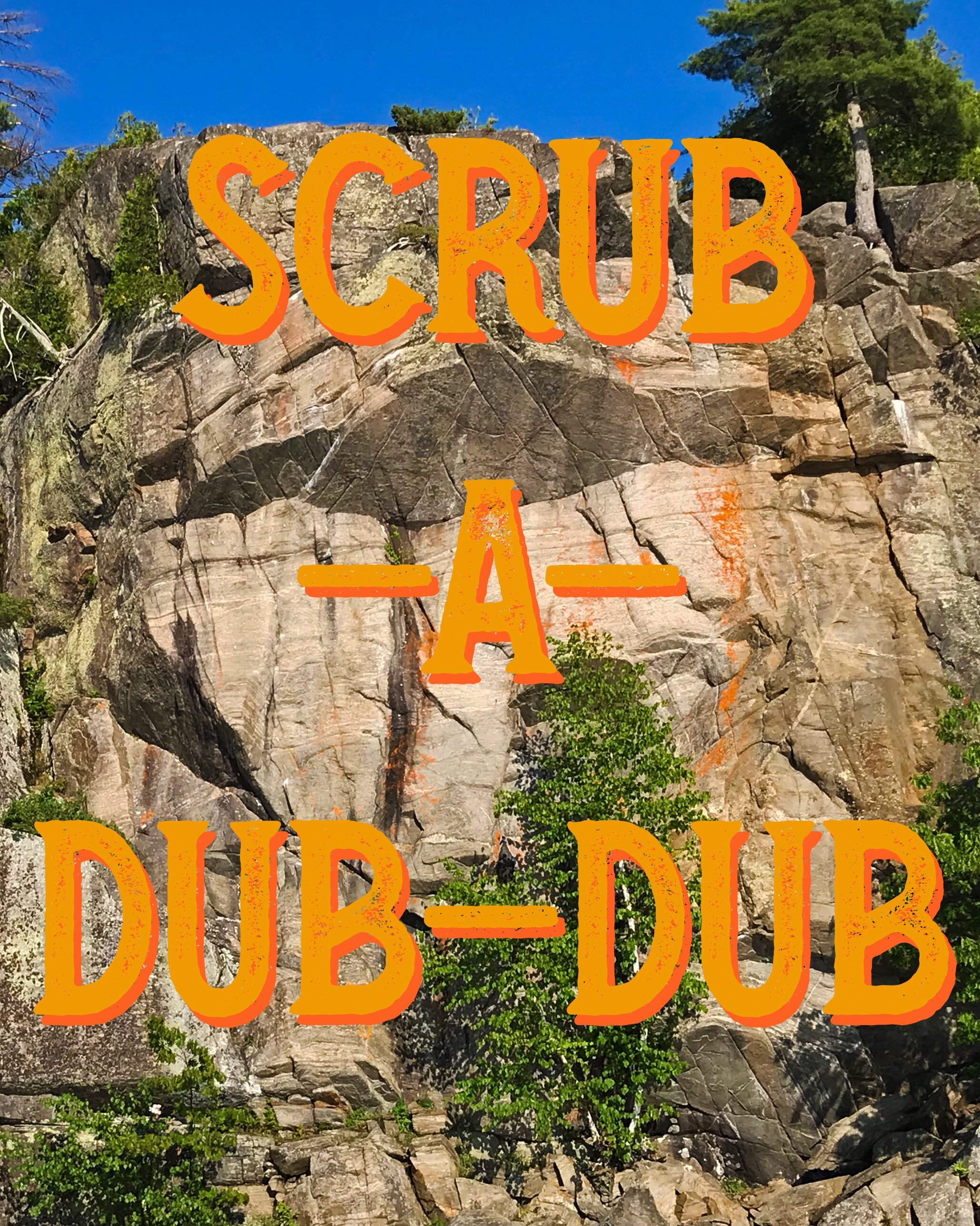Scrub-a-dub-dub: Breaking the chalk-and-slip cycle!
As June and July heat up Ontario’s cliffs, we’ll be chalking up more than ever to dry our sweaty hands.
But, in addition to drying our hands, chalking up also coats the rock’s natural textured surface with a slippery layer of magnesium carbonate, mixed with oil and sweat!
As this layer gets caked into the rock, the rock’s natural friction disappears and we enter a dreaded “chalk-and-slip” cycle:
-I slip … therefore I chalk !
-I slip even more … therefore I chalk even more !
-Repeat !
This cycle prevents us from sending AND it causes a variety of undesirable consequences at our climbing areas :(
Breaking the chalk-and-slip cycle is all about using enough chalk to dry your hands/fingers while keeping as much of it OFF the rock as possible!
5 tips to help you break the chalk-and-slip cycle:
(1) Use a chalk sock inside your chalk bag and gently squeeze it to chalk up - forgoing the chalk sock and squeezing hard will dry your hands/fingers but it will also cake the rock in chalk and decrease friction, defeating the purpose of chalking.
(2) Blow excess chalk off your hands/fingers before grabbing the rock - your hands will be dry AND you’ll avoid making the rock slippery.
(3) Don’t chalk up when you’re not sweaty - climbers often chalk up when they’re nervous or when they’re trying to pull a hard move, making it harder to send. To avoid this, ask your belayer to remind you to stop chalking when you go chalk crazy.
(4) Attach a nylon, horse, or boar brush (never steel!) to your chalk bag and brush chalky holds between attempts and again before you leave the route - this will prevent chalk from building up on the rock which will allow you, and others, to utilize the rock’s natural friction. It will also help you leave the cliff in better shape than you found it.
(5) If you can’t help but over-chalk, cut the amount of chalk you carry in half so you’re forced to use it sparingly. You can also leave your chalk bag in your pack for a few routes to get a sense of how much chalk you really need.
5 undesirable consequences of over-chalking:
(1) Chalky routes may ruin another climber’s onsite attempt - if you don’t brush your chalk then the next climber may have to rappel down the route to clean it, thus ruining their onsite attempt.
(2) Many climbing areas in Ontario are being monitored by conservation officers who document highly visible chalk marks and record them as part of climbing’s impact. We must clean up after ourselves if we want to gain favorable access terms from land managers.
(3) Chalky routes get noticed by non-climbers (ex: hikers, campers, paddlers) who are trying to enjoy the natural cliffscape. Complaints from these groups draw negative attention and make access harder to obtain and protect.
(4) Climbers that prefer a more natural climbing experience get bummed when there’s excessive chalk on every hold.
(5) Chalk can permanently stain and polish softer, more porous rock like sandstone and limestone. Once the damage is done, there’s no going back!
So, let’s show our rock some love by moderating our chalk use and cleaning up after ourselves :)
Keep in mind that less chalk + clean rock = more sends and fewer issues!


